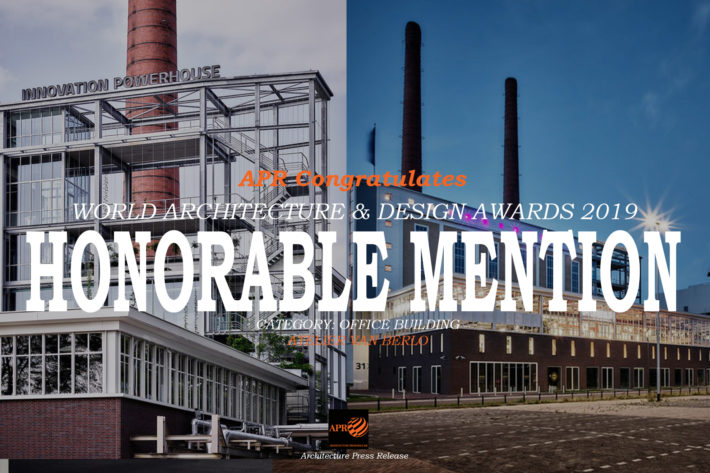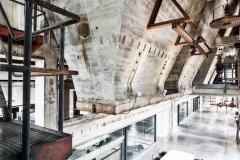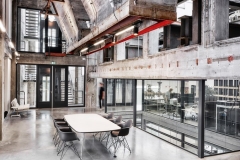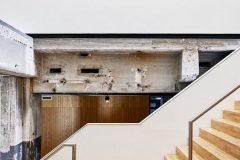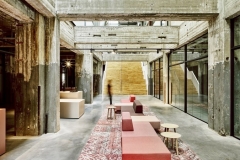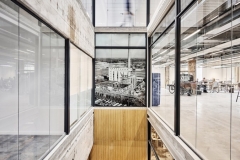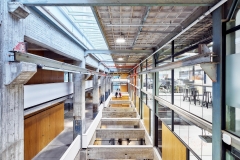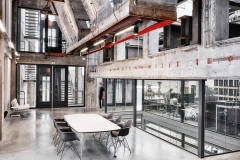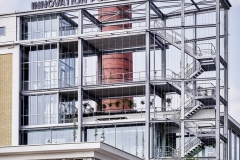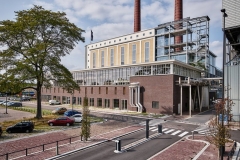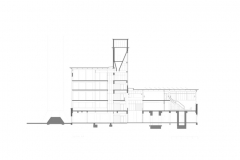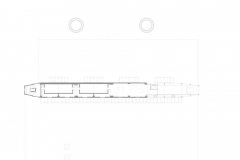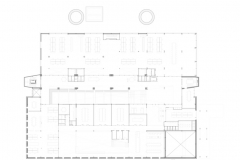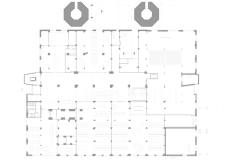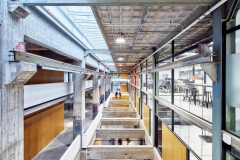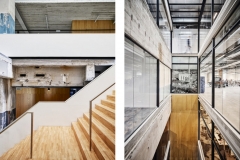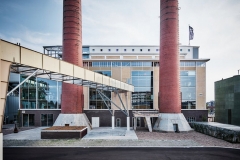The former power plant of Philips is transformed into the multi-tenant Innovation Powerhouse. A transformation from a pure, brute, raw and heavy industrial complex – in size and volume completely unsuitable for office use – into a comfortable, breathing, spacious, fresh and young work environment.
World Architecture & Design Awards 2019
Honorable Mention | Category: Office Building
Architects: Janne van Berlo
Studio: Atelier van Berlo
Collaboration with: Eugelink Architectuur and De Bever Architecten
Country: The Netherlands
Website: www.ateliervanberlo.com
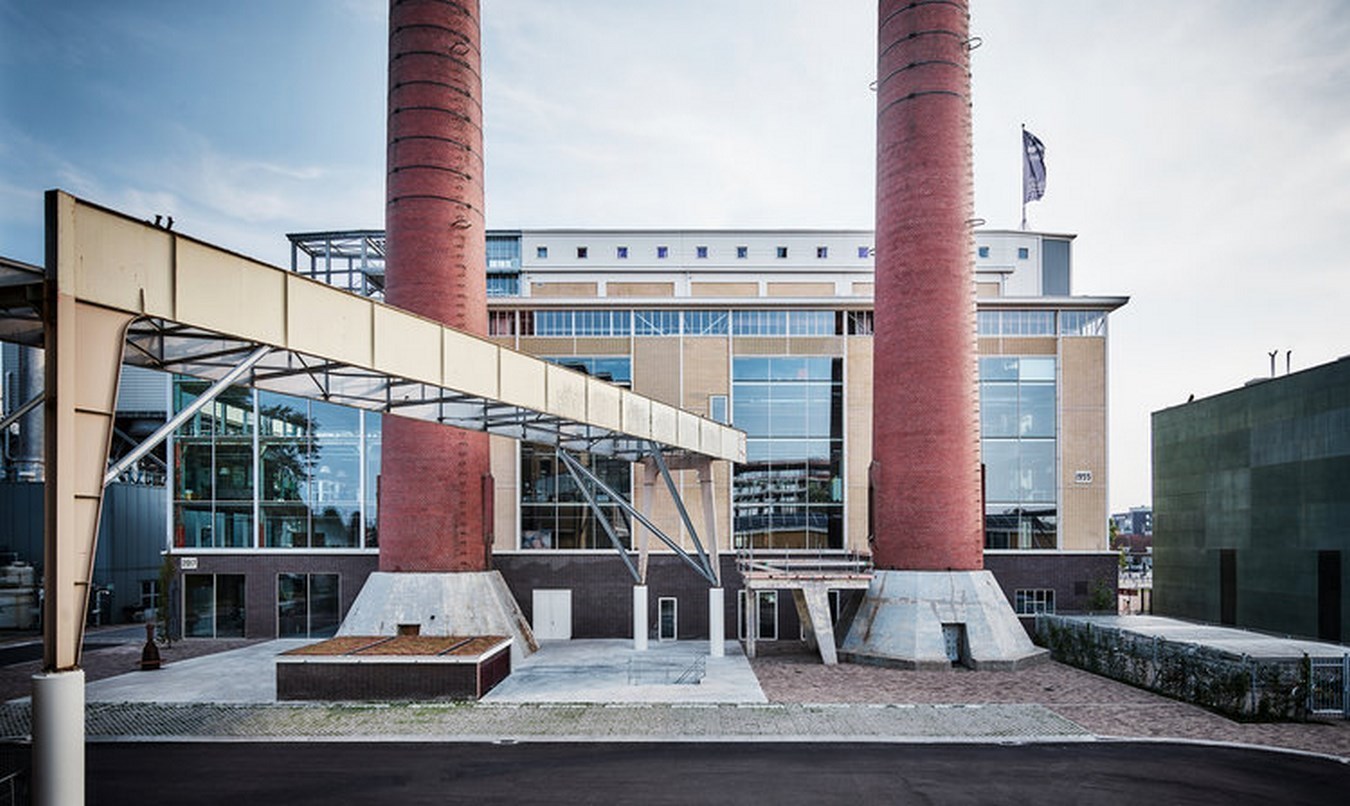
The Innovation Powerhouse is an ecosystem for the innovative industries. A centre of creativity; a hyper-modern, multi-tenant building where different companies meet, inspire and stimulate innovation. Situated on Strijp-T, the out of use power plant is an iconic building, a landmark of Eindhoven. Built in four stages, from 1953 till 1972, the power plant used to provide Philips factories with power through coal, gas and later oil.
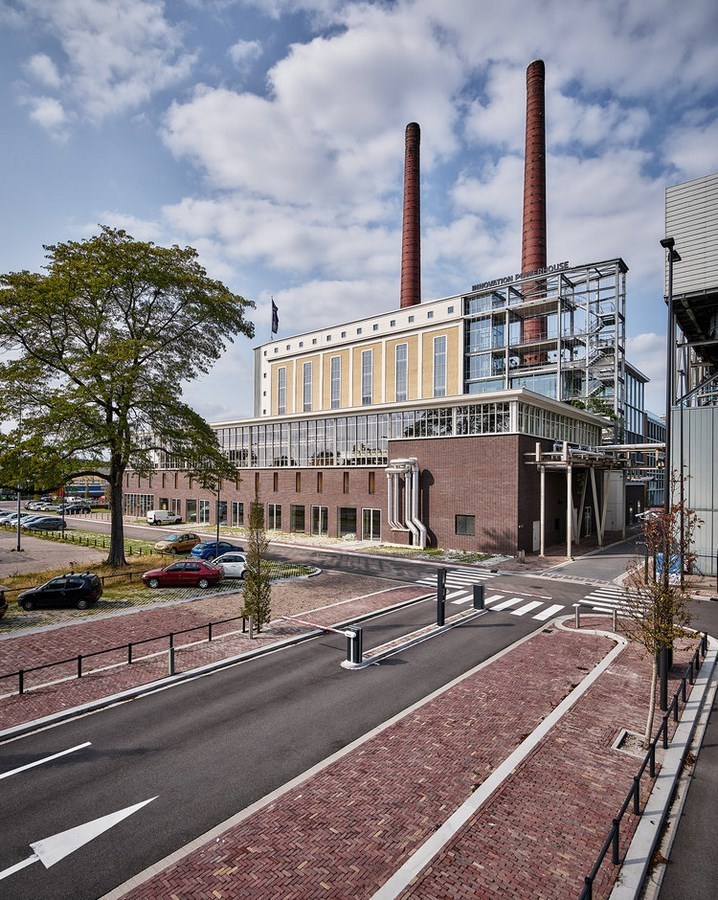
The two main points of departure for the design were to maintain the building’s innate architectural qualities and to incorporate this vision of open innovation. Throughout the design this idea of connectives was essential. The architects wanted the companies to constantly meet, to create an almost effortless inspiration of one another, which was translated into a vibrant centre.
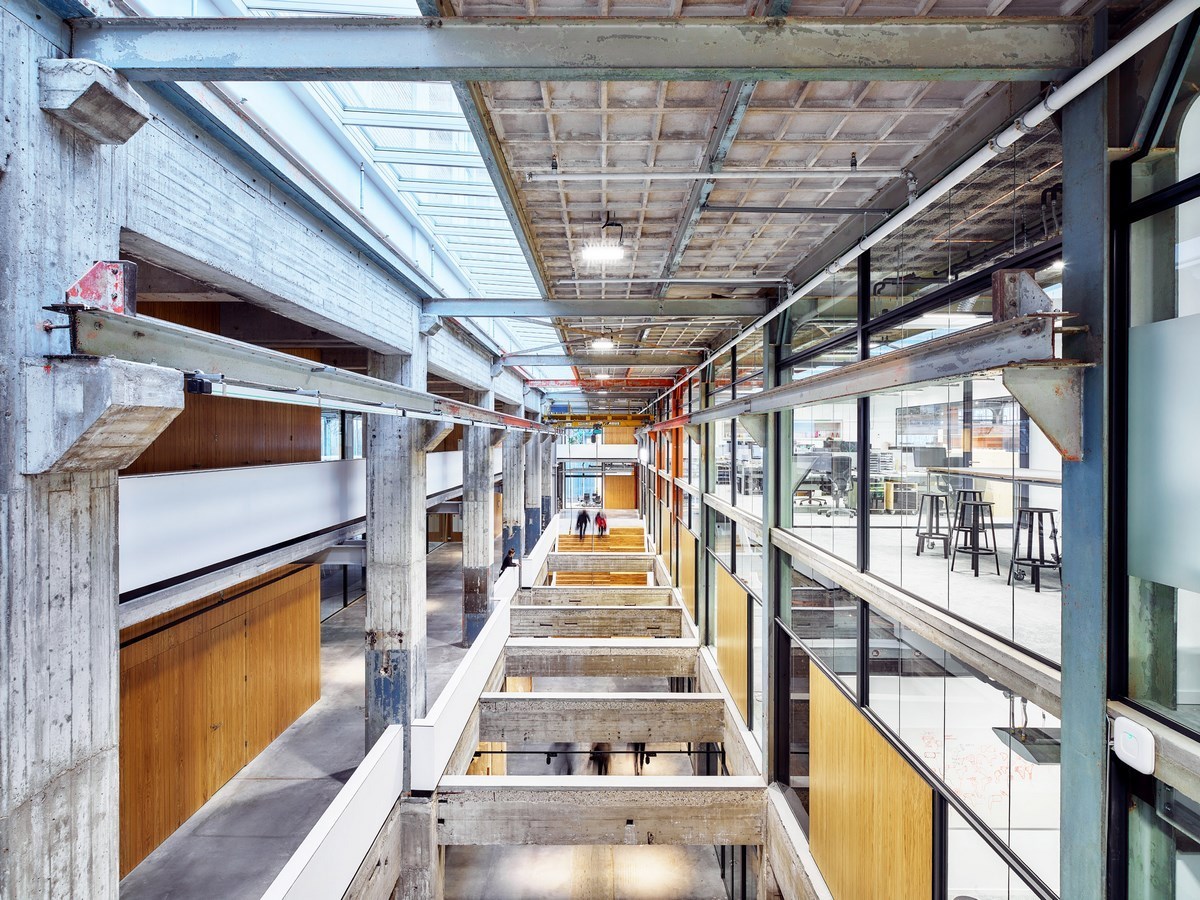
To create this vibrant centre, the architect created a clear-cut in the building, a straight line through the heart spanning among others the original central backbone, a 5-meter wide high-rise where the cole chutes still hang at 28-meter hight. Next to this central backbone, the roof is opened up by a skylight spanning the full length, bringing light into the otherwise dark centre of the building and revealing the magnitude of the old heavy concrete structure. In addition, this skylight gives a peek at the facade, allowing all who view it to experience the sheer height of the midpoint.
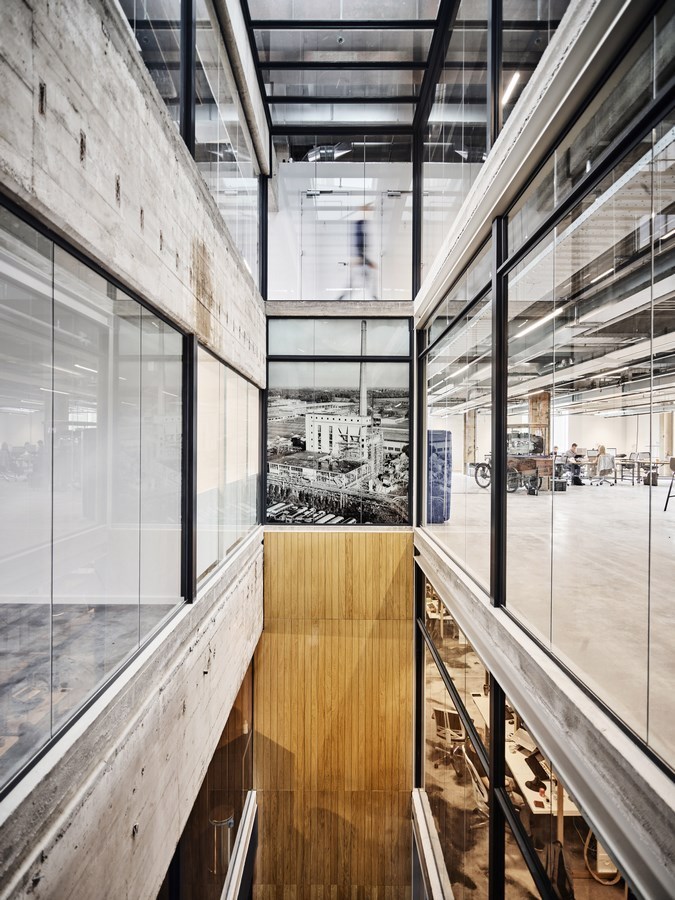
Due to a change in power fuelling, the original design was never finished. Since there was no longer a need for cole chutes, the 5-meter wide high-rise was never finished. Inspired by the original drawings, the architects added a steel vertical garden to the central high-rise, giving the building its originally intended symmetrical look. This vertical garden with meeting rooms, a glass elevator and emergency exit follows the lines and rhythm of the original architecture. The open, transparent and green appearance hints at a new sustainable green energy production.
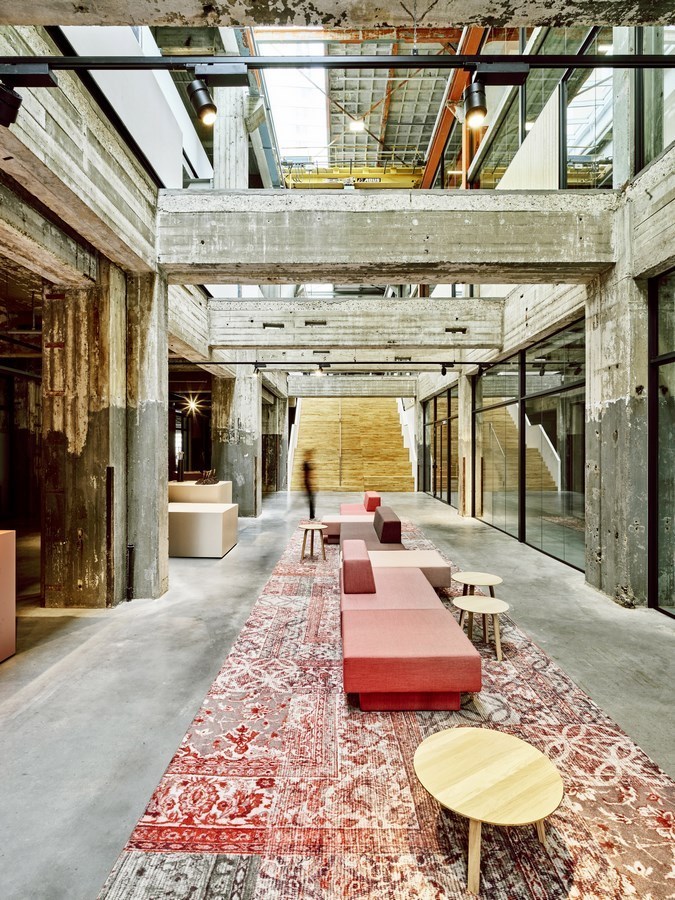
The symmetrical look is finished by a glass extension at the back of the building. It follows the lines and rhythm of the building, but through a minimalistic detailing and modern materials, it indicated clearly a new phase for this impressive building. The other interventions, such as the small windows for light in the offices and the main entrance, are kept small, to ensure that the monumental industrial character of the building stays visible. Within the renovation, there was also great attention for sustainability. Due to HR + glass, solar panels, newly isolated walls and roofs, the building now has an A+ energy label.
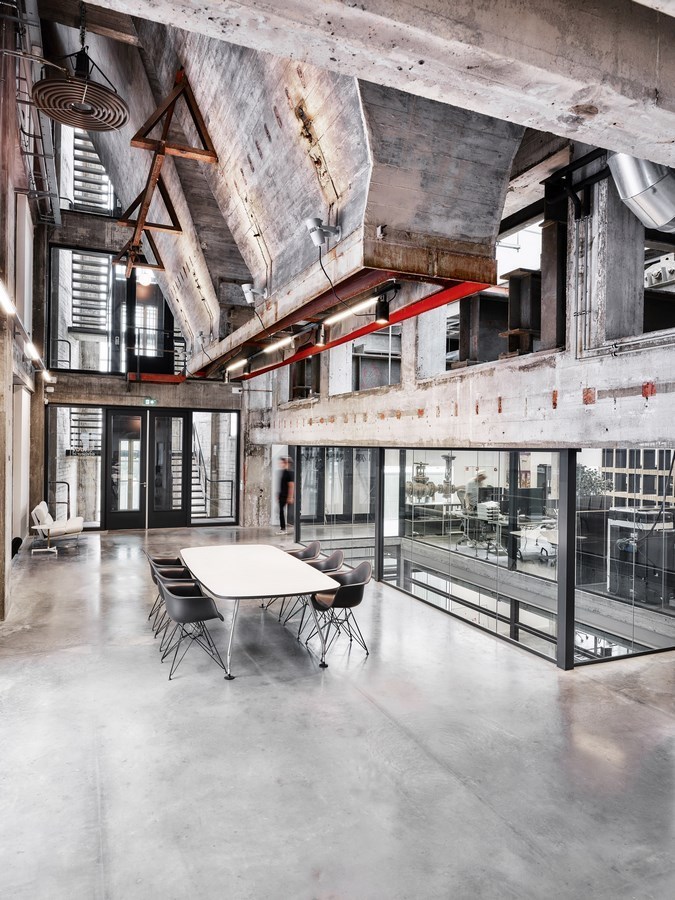
Another great opportunity. APR’s next award Global Future Design Awards 2019 is open for Registration. Don’t miss the chance, its a huge platform for architects.


